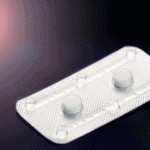
Medically reviewed by Dr. David Boboye
Sickle Cell disease is a disorder of the red blood cell, which is inherited. Since the red blood cells, which are the oxygen carriers, are affected here, SCD causes an insufficient supply of oxygen to the body’s cells and tissues.
Sickle cell disease (SCD) is an autosomal recessive hemoglobinopathy (an inherited blood disorder) caused by an amino acid substitution from glutamic acid to valine in the beta-haemoglobin chain. This results in defective haemoglobin molecules designated ‘haemoglobin S’ that cause sickling or clumping of red blood cells, resulting in verso-occlusion, ischemia, inflammation and organ damage, as well as haemolytic anaemia.
In this article, we will discuss leg ulcers in sickle cell disease and how they can best be treated in a way that provides adequate understanding and helpful guidance on its effective management in simple terms.
Haemoglobin is a protein molecule that constitutes part of your red blood cells. The haemoglobin carries oxygen in the red blood cells from the lungs to other tissues and organs of the body and carries carbon dioxide back to the lungs. Haemoglobin also plays a vital role in maintaining the shape of the red blood cells. It is the haemoglobin that gives the red blood cell its red colour.
SCD affects multiple organ systems and manifests diverse symptoms, such as pain crises, haemolytic/anaemic crises, and complications which include, SCD Nephropathy, CVA, pulmonary hypertension, avascular necrosis of hip/shoulder joints, priapism, Osteomyelitis and leg ulcers
Leg ulcers in patients with Sickle Cell Disease are common and can vary in incidence among different phenotypes of the condition and geographical area. The incidence of leg ulcers is highest among male adult patients from low socioeconomic backgrounds.
Leg ulcerations have been a long-recognized complication of SCD, and even the first SCD patient to be described in North America in 1910 had chronic leg ulcerations. The prevalence of leg ulceration varies, being low before age 10. It is most common in sickle cell anaemia (homozygosity for HbSS) and less often seen in HbSC disease or HbS-β thalassemia (which are types of SCD). Leg ulcers occur ten times more frequently in persons with SCD than in the general population.
Ulceration of the leg is one of the major complications of sickle cell disease. Most times, leg ulcers in SCD patients are chronic (long-lasting) and might not even resolve with therapy. This is why it is of major concern to physicians.
Although the occurrence of leg ulcers in SCD patients has been linked with hyperhemolysis (excessive destruction of the red blood cells to release haemoglobin), how it develops is still poorly understood.
The origin of chronic ulcers in SCD is complex. One of the characteristics of sickle cell disease is the entrapment of the deformed red blood cells in the blood vessels. This decreases blood flow through the venules and capillaries.
The capillaries are the smaller vessels that carry blood containing oxygen and nutrients from the bigger arteries directly to the tissues that need them. When there is decreased blood flow, enough oxygen won’t be supplied to the tissues. This results in ischemia and inflammation that might cause organ damage.
The proposed potential contributing factors to the development of leg ulcers in sickle cell patients are as follows:
NB: Venographic studies have shown that venous insufficiency is not a primary cause of sickle cell ulcerations. Instead, it is the arteriovenous shunting that has been postulated as a factor in ulcer formation. Arteriovenous shunting is the passage of blood from the arteries to the veins without passing through the smaller capillary networks. This shunting deprives the skin of oxygen and hence promotes ulceration.
Furthermore, trauma, infection and inflammation have all been cited as potential causes of lower extremity ulcerations in SCD. It is the combination of these factors, along with the interrupted microcirculation, that contributes to the pathophysiology of lower extremity ulcerations in patients with SCD.
Since leg ulcers are common in sickle cell patients, the question is, could there be risk factors? What places a sickle cell patient at a higher risk of developing leg ulcers?
Leg ulcers occur in areas with less subcutaneous fat, thin skin, and decreased blood flow.
The commonest sites are:
Leg ulcers are first classified as acute or chronic. This classification is based on duration (even though there is no standard duration of time that defines chronicity).
For acute ulcers, they are expected to heal within one month of onset. Chronic ulcers, on the other hand, extend to a period of six months or more.
Other classifications of ulcers include:
Many severity indices for leg ulcers are based on size, depth, and duration.
Staging based on depth is as follows:
Stage 1: Nonblanchable erythema of intact skin, which is usually followed by the ulcer lesion.
In individuals with darker skin, discolouration of the skin, warmth, oedema, induration, or hardness may also be indicators.
Stage 2: Partial-thickness skin loss involving epidermis, dermis, or both.
The ulcer is superficial and presents clinically as an abrasion, blister, or shallow crater.
Stage 3: Full-thickness skin loss involving damage to or necrosis of subcutaneous tissue that may extend down to, but not through, underlying fascia.
The ulcer presents clinically as a deep crater with or without undermining of adjacent tissue.
Stage 4: Full-thickness skin loss with extensive destruction, tissue necrosis, or damage to muscle, bone, or supporting structures (eg, tendon, joint capsule).
Undermining and sinus tracts also may be present.
When it comes to managing leg ulcers, there are two major challenges. First is the fact that ulcers usually take a long time to heal. The second challenge is that there are high chances of leg ulcers re-occurring after healing.
These challenges mostly stem from the fact that therapies or medical interventions used do not address what caused the leg ulcer in the first place.
Another problem that has posed a challenge to the proper care and management of leg ulcers is the intense pain associated with the lesions. Most times, pain during the dressing of wounds is intolerable, decreases patient compliance, interferes with wound care regimens and makes wound care difficult.
Even though leg ulcer management in patients diagnosed with sickle cell disease poses challenges to physicians, it doesn’t mean the condition is beyond management.
Principles of management of leg ulcers include education, protection, infection control, debridement and compression bandages.
First, stringent care and preventive measures should be taken to prevent trauma in the legs. Trauma is one of the leading causes of chronic non-healing leg ulcers in sickle cell patients.
Also, treatment of minor wounds should be started early, the use of compression socks amongst sickle cell patients should be encouraged, and insect repellents should be used to prevent insect bites.
Recently, more advancements have been made in therapies used for treating conditions like ulcers. As more studies are carried out, medical scientists and clinicians come up with better treatment options that sickle cell patients with leg ulcers can benefit from. Some of the recent advancements in treatment options include:
Studies carried out on the nutritional deficiencies of sickle cell disease show that people diagnosed with SCD typically have a deficiency of the zinc nutrient. It is believed that zinc plays an important role in wound healing and promoting the immune system. Also, some studies found that administering zinc sulphate caused faster healing of leg ulcers. Thus, taking zinc supplements and foods rich in zinc might help prevent leg ulcers in people diagnosed with sickle cell disease.
Also, according to clinical observations, local trauma or injury plays a role in the development of leg ulcers. This means preventive strategies as simple as wearing younger adults and older children protective leggings with non-elastic leg orthoses with ankle straps might help prevent injuries that would cause leg ulcers.
Other things to do or ways to prevent the occurrence of leg ulcers in patients of sickle cell disease include:
Leg ulcers in sickle cell patients are prevalent. It is, in fact, one of the major complications of Sickle Cell Disease (SCD). Most times, SCD patients with this complication don’t get optimal care, and that is due to a range of factors such as prolonged healing, reoccurrence and pain. For this reason, prevention and early intervention should be the first line of action in managing the condition.
It is also important for healthcare professionals to educate patients and the public on leg ulcer preventive measures while also improving the complex care of sickle cell patients with leg ulcers. Struggling with leg ulcer derivative of sickle cell disease? Speak to a Doctor on KompleteCare for optimal care and management.
David Boboye is a supernumerary resident doctor of family medicine in National Hospital Abuja. He graduated from the College of Medicine of the University of Lagos and did his Internship in Lagos University Teaching Hospital – LUTH, Idi-Araba, Lagos.
NutritionFebruary 5, 2025
MedicationFebruary 5, 2025









Pingback: Genotype Compatibility For Marriage Before You Say "I Do" - KompleteCare Blog